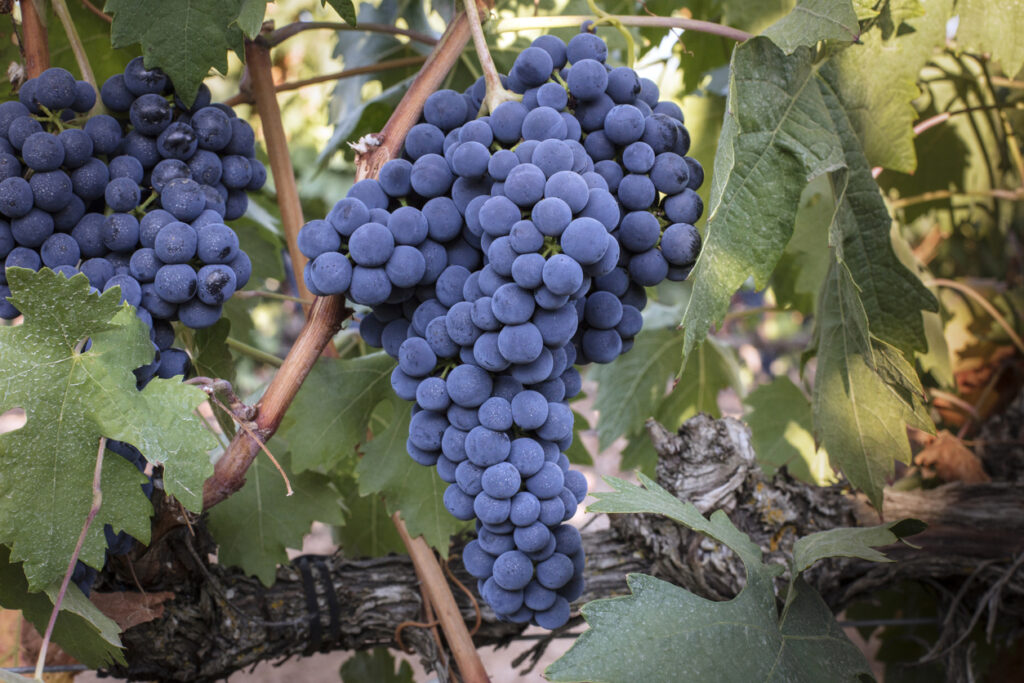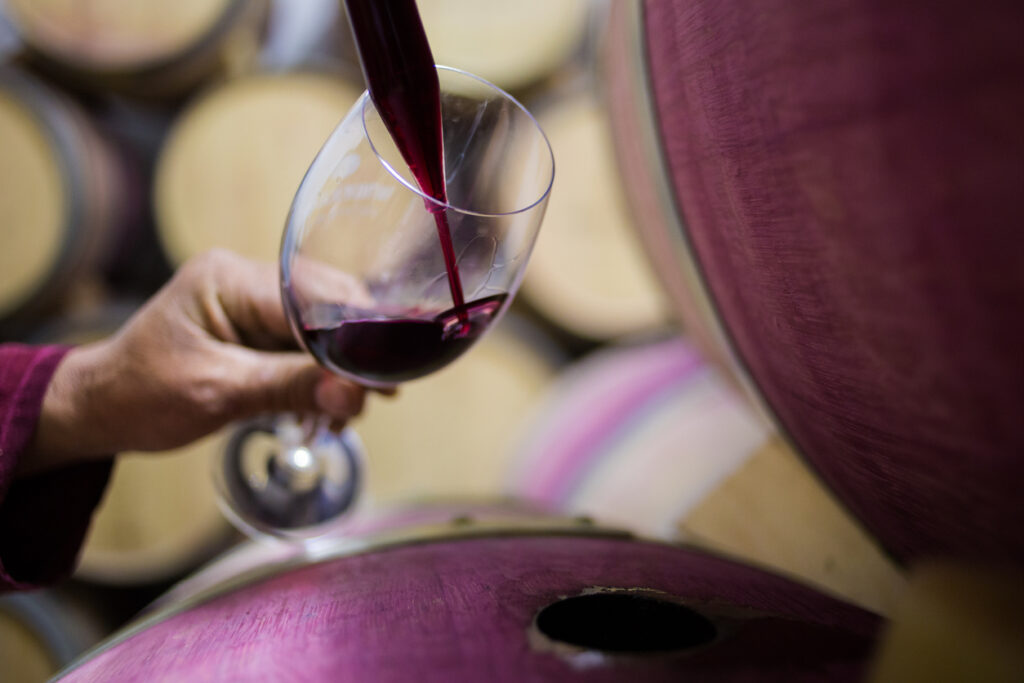For wine enthusiasts, the world of grape varieties is a vast and tantalizing one. With countless options to choose from, each boasting its unique characteristics, it is easy to get lost in the sea of choices. Among these options are two beloved Spanish red grapes that have been captivating palates for centuries: Tempranillo and Garnacha.
These two varietals may originate from the same country, but they couldn’t be more different from one another in terms of flavor profile, terroir preference, and cultural significance. In this article, we will delve into the fascinating world of Tempranillo and Garnacha, exploring their origins, taste profiles, and ideal food pairings to help you navigate through these enticing Spanish wines with confidence.

Understanding Tempranillo
Tempranillo, often hailed as Spain’s most iconic red grape variety, is a wine lover’s delight. With its deep ruby color and smooth texture, Tempranillo offers a delightful combination of fruity flavors and elegant tannins. Grown primarily in the regions of Rioja and Ribera del Duero, this versatile grape produces wines that range from young and vibrant to richly aged masterpieces.

One of the defining characteristics of Tempranillo is its ability to reflect the terroir where it’s grown. The varied soils in Spain give rise to distinct expressions of this grape, adding complexity and depth to the wines. From the chalky soils of Rioja Alavesa that produce wines with crisp acidity and floral notes, to the limestone-rich soils in Ribera del Duero that result in more concentrated and powerful wines, each region brings a unique personality to Tempranillo.

Another reason for Tempranillo’s enduring popularity lies in its ability to age exceptionally well. Its moderate tannins ensure graceful aging without overpowering the fruit flavors. As these wines mature in oak barrels or bottles over several years, they develop complex aromas of leather, tobacco, spice, and dried fruits while retaining their full-bodied character.
Understanding Garnacha
Garnacha, also known as Grenache, is a versatile and often underrated grape variety that has been thriving for centuries. Native to Spain, Garnacha is now widely cultivated in wine regions across the world, including France’s Rhône Valley and California. What sets this red grape apart is its ability to adapt to different climates and produce exceptional wines with distinct characters.

With high sugar content and low acidity, Garnacha wines tend to be bold and fruity. They often display intense aromas of ripe berries, cherries, and spices. However, what truly makes Garnacha intriguing is its ability to develop complex flavors when aged in oak barrels. These wines can exhibit notes of leather, tobacco, vanilla, or even earthy tones.

One should not let the light color fool them; Garnacha frequently surprises with a full-bodied palate rich in fruit flavors. It pairs exceptionally well with grilled meats or hearty dishes but can also be enjoyed on its own due to its smooth texture and moderate tannins. Its versatility makes it equally suitable for casual gatherings as it does for special occasions.
Similarities of Tempranillo and Garnacha
Tempranillo and Garnacha are two of the most iconic grape varieties in Spain, each with their own distinct attributes. However, when it comes to similarities, these two grapes have more in common than one might think.

Origin
Firstly, both Tempranillo and Garnacha are native to Spain and have a long history of cultivation in various Spanish wine regions. They thrive in the Mediterranean climate, where they soak up the abundant sunshine and retain enough acidity to create well-balanced wines.
Wine styles
Another striking similarity between Tempranillo and Garnacha is their versatility in winemaking styles. While both grapes often produce full-bodied red wines, they can also be used for rosé and even white wine production. In fact, some winemakers are experimenting with blending these two varieties together to create unique cuvées that showcase the best of both worlds. Furthermore, both Tempranillo and Garnacha can age gracefully when aged in oak barrels, developing complex aromas of dark fruit, smokey notes, and subtle spiciness.

Differences between Tempranillo and Garnacha
Tempranillo and Garnacha are two of the most widely planted red grape varieties in Spain, each with its own distinct characteristics and styles. Tempranillo is known for producing elegant and structured wines, while Garnacha is loved for its vibrant fruit flavors and supple mouthfeel.
Tannins
One key difference between Tempranillo and Garnacha lies in their level of tannins. Tempranillo tends to have higher tannin levels, which give the wine a firm structure and ageability. On the other hand, Garnacha typically has softer tannins that contribute to its smooth and approachable nature. This makes it an excellent choice for early consumption.

Flavor profile
Another notable distinction between these two grapes is their flavor profile. Tempranillo often exhibits flavors of ripe berries, cherries, tobacco, leather, and vanilla. Its complex aromas make it a great choice for those who appreciate nuanced wines with layers of flavors. In contrast, Garnacha tends to showcase bold fruity notes such as raspberries, strawberries, plums, and blackcurrants. These bright aromas make Garnacha a crowd-pleaser. It can be enjoyed by both new wine enthusiasts and seasoned connoisseurs looking for a refreshing change.

Acidity
When it comes to comparing Tempranillo and Garnacha, one of the key differences lies in their acidity levels. Tempranillo tends to have higher acidity, which gives it a refreshing, crisp character. This makes it a great choice for those who prefer wines with a vibrant, zesty taste. On the other hand, Garnacha is known for its lower acidity and fuller body. This grape variety produces wines that are often described as juicy and lush, with a smooth mouthfeel.

Sweetness
Another distinguishing factor between Tempranillo and Garnacha is their sweetness profiles. While both wines can offer various levels of sweetness depending on factors such as ripeness and winemaking techniques, typically, Tempranillo leans towards the drier end of the spectrum. It often exhibits flavors of blackberry, cherry, and plum that are complemented by moderate tannins. In contrast, Garnacha grapes tend to be sweeter due to their higher sugar content at full ripeness. As a result, wines made from this grape variety can showcase notes of ripe berries, jammy fruit flavors, and sometimes even baking spices.

How to serve Tempranillo and Garnacha
When it comes to serving Tempranillo and Garnacha, there are a few key factors to consider that can enhance the overall experience. Firstly, these red wines are best served at slightly cooler temperatures compared to other red varietals. Cooling them down a bit can help tame their natural high alcohol content. It brings out more of their complex flavors and aromas.

Food Pairing
Pairing these wines with food is also crucial for an enjoyable experience. The boldness and vibrant fruit flavors of Tempranillo make it an excellent companion to grilled meats, such as steak or lamb. For those who prefer vegetarian options, roasted vegetables or dishes with tomato-based sauces also complement this wine well. On the other hand, Garnacha exhibits a softer character with hints of spice and berries. It pairs exceptionally well with cured meats like salami or prosciutto. Charcuterie boards filled with cheeses, olives, and baguette slices are a good match, too.

Glassware
To fully appreciate the unique qualities of these wines, considering the glassware is essential. Opt for a medium-sized wine glass with enough space for swirling and a tulip-shaped bowl. This will help concentrate the aromatic compounds of the wine towards your nose. Additionally, decanting these two varietals can allow them to breathe further and develop richer flavors before serving.

Conclusion
In conclusion, both Tempranillo and Garnacha are exceptional Spanish red wine grape varieties that offer distinct flavors and characteristics. While wine lovers know Tempranillo for its elegant and structured profile with notes of red fruit and vanilla, wine connoiseurs calabrate Garnacha for its bold and fruity nature with flavors of blackberry and spice. Ultimately, the choice between these two grapes comes down to personal preference and the occasion. Whether you prefer a refined and balanced wine or a rich and intense one, both Tempranillo and Garnacha have something unique to offer. So next time you are exploring Spanish wines, don’t hesitate to try both Tempranillo and Garnacha. You can truly appreciate the diversity of flavors from Spain’s vineyards.

